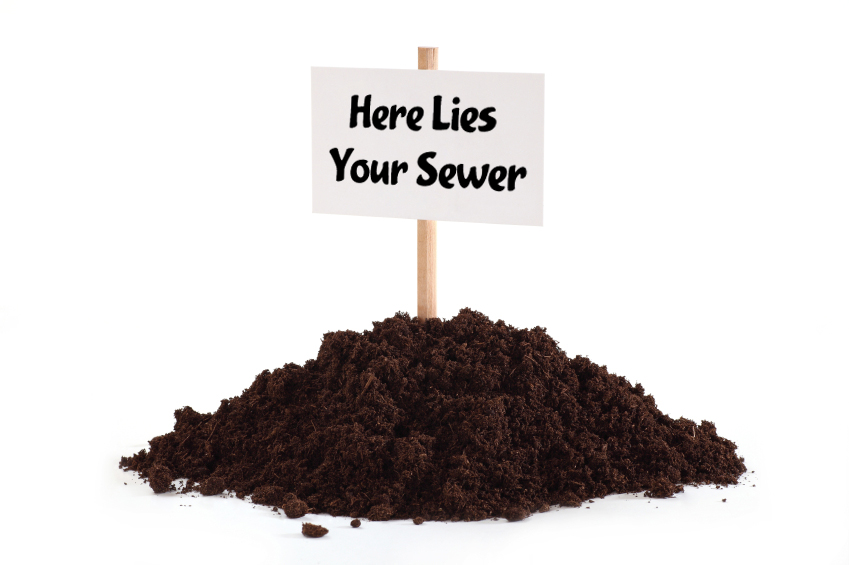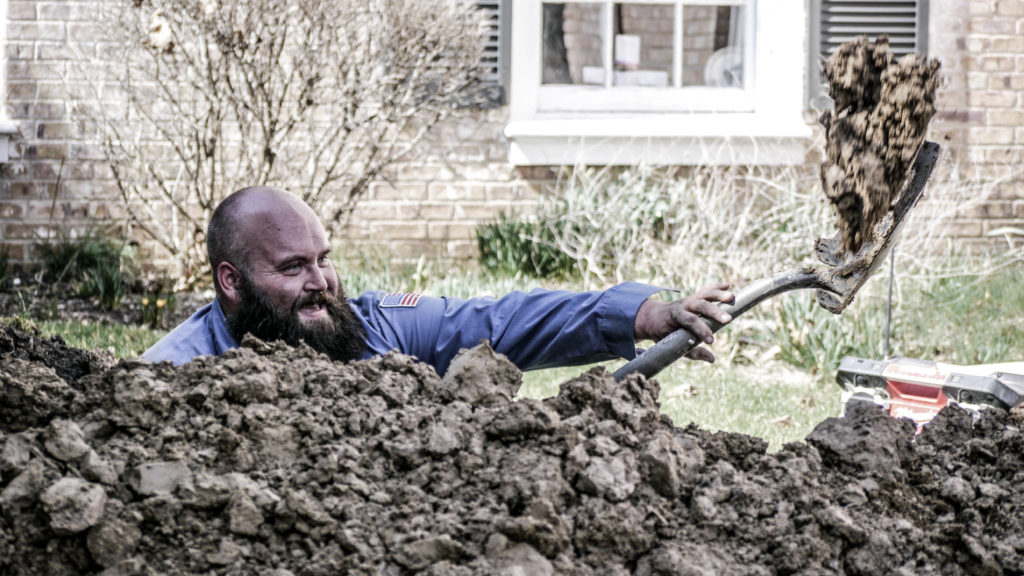What’s Up With the Mound of Dirt After a Sewer Repair?
So you’ve just had your sewer repaired.
You’re still recovering from the shock of learning that a pipe that carries waste out of your home was broken and cost thousands of dollars to fix. Let’s face it, before this happened, you hadn’t given much thought to your sewer and its function. You probably didn’t even remember it was there. Now your yard has been torn up and your pocket book is substantially lighter.
A rude awakening, no doubt. But now to top this all off, you come home from work and find a 4-foot tall mound of dirt in your front yard. Thinking that the job is incomplete, you call the contractor to see what’s going on and you get another surprise. The contractor tells you that the mound is there for settling, and settle it will…for months. And that if you take away any of that dirt before it has a chance to settle, you will be left with a hole in your yard.
So, you’ve now had a sewer backup into your house, paid thousands for the repair, and now you have to see one of these every time you look out your window.

How and Why Dirt Settles
First, let’s consider the physics behind soil settlement. According to the International Association of Certified Home Inspectors, the following is a fairly typical soil composition by volume:
• 45% Minerals (silt, sand, clay, stone, etc.)
• 25% Water (depends on water holding capacity of soil and precipitation)
• 25% Air
• 5% Organic matter (living and dead organisms)
The majority of soils is made up of minerals which vary in size and can range from large stones all the way to tiny clay particles, smaller than .002 millimeters in diameter and invisible to the naked eye. The spaces between these particles are occupied by water and air.
When a sewer repair is performed, the excavation disturbs the soil, the pockets between the minerals become larger, and water and air move in. The decades of compression which formed this naturally compacted soil have just been undone in a single day.

And so here we are, with the giant mound in your yard, wondering what can be done. The good news is that at this point, there are still some things you can do to speed up the process. The bad news is that it won’t be by much.
What Can Be Done to Speed Up the Settling of the Mound
You can start by digging small holes several feet apart in the mound, just large enough to fit a garden hose. Then stick the garden hose into each opening, and run the water for a few hours. The water will help push out some of the pockets of air, and reduce the spaces between mineral particles, which will help with the settling process. If you have a piece of metal pipe, you can use it to get a little deeper into the mound, feed the hose into the pipe, and then run the water for a couple of hours
You should do this every few days, especially in the absence of rain. You can also use a hand tamper to tamp down the dirt every so often, and finally when the dirt is low enough to push a roller over it, you can give that a try for a nice finishing move.
Unfortunately, the majority of the work needed to reduce the settling time should have already been done. Quality plumbers and excavators will take some additional steps during the backfilling process in order to expedite the settling, including using a tamper to compact the dirt with every foot or so of backfill.
There’s no way to make the dirt settle instantly. Even the most well-compacted backfills will still require a small mound to be left behind to settle, but that mound should be no higher than a foot or two at the most, not three or four (one exception to this is when the ground is frozen – in such a case, it will be more difficult to compact.)
The best companies will also take account of how much new material was introduced into the trench when the repair was performed. Keep in mind that the dirt forming the giant mound is only the dirt that was taken out of the ground during the excavation, nothing more. However, plumbers will often bed new pipe in gravel to keep it from settling and shearing off, and sometimes the repair will include more or larger pipe than what was replaced. The best contractors will take the volume of these items into account when measuring the amount of backfill, and take away just enough soil to make sure that the mound settles perfectly a few months after completion.
Alternatives to Excavation
Of course the best way to avoid the giant mound of dirt in your yard is not to dig in the first place. There are several options available to repair a broken underground pipe without the need for excavation.
The Scottish Plumber specializes in these types of repairs. Our Trenchless Sewer Repair System and our Pipe Stent procedure can help homeowners avoid messy digs, and can repair most broken sewer pipes without the need for demolition, excavation, or restoration.
For more information, check out the video below, click on the links above, or visit us at www.scottishplumber.com.
